31-40 of 238 results
-
The Rise and Fall of the Veterans' Airlines
PI Alan Bender
This is an investigation into a practically unknown chapter in U.S. airline history: the advent of a brand new breed of airlines in the aftermath of World War II, mom-and-pop discounters immensely popular with the general public but very threatening to the established airlines and to the federal regulatory system.
Postwar America was a land full of opportunity. Economically and socially, in both industry and education, it was the dawn of a new era. But such was not the case in the U.S. airline industry. New technology meant faster, bigger, safer, more comfortable aircraft, yet traveling by air remained unaffordable to the vast majority of Americans. This is the story of opportunity lost due to rampant government protectionism and powerful vested interests. Utilizing historical materials from the National Air and Space Museum, National Archives, Library of Congress, four presidential libraries, and various oral history collections, a book is being prepared and written that documents the history of these long forgotten - yet historically very significant - airline companies that truly pioneered affordable airline transportation in America.Categories: Faculty-Staff
-
Discontinuity-driven mesh adaptation method for hyperbolic conservation laws
PI Mihhail Berezovski
The proposed project is aimed at developing a highly accurate, efficient, and robust one-dimensional adaptive-mesh computational method for simulation of the propagation of discontinuities in solids. The principal part of this research is focused on the development of a new mesh adaptation technique and an accurate discontinuity tracking algorithm that will enhance the accuracy and efficiency of computations. The main idea is to combine the flexibility afforded by a dynamically moving mesh with the increased accuracy and efficiency of a discontinuity tracking algorithm, while preserving the stability of the scheme.
Key features of the proposed method are accuracy and stability, which will be ensured by the ability of the adaptive technique to preserve the modified mesh as close to the original fixed one as possible. To achieve this goal, a special monitor function is introduced along with an accurate grid reallocation technique. The resulting method, while based on the thermodynamically consistent numerical algorithm for wave and front propagation formulated in terms of excess quantities, incorporates special numerical techniques for an accurate and efficient interface tracking, and a dynamic grid reconstruction function. The numerical results using this method will be compared with results of phase-transition front propagation in solids and densification front propagation in metal foam obtained by applying the fixed-mesh method be used to justify the effectiveness and correctness of the proposed framework. This project will contribute significantly towards the development of corresponding methods in higher dimensions including dynamic crack propagation problems. Development of modern high-resolution finite-volume methods for propagation of discontinuities in solids, as well as of supplementary techniques, is essential for a broad class of problems arising in today's science. The broader impact of this project also includes educational purposes. The method used in this project will be incorporated into future projects for computational mathematics major students who will gain an experience in the state-of-the-art computational science.Categories: Faculty-Staff
-
2017 PICMath: Mie Scattering Diagnostic
PI Mihhail Berezovski
CO-I Clayton Birchenough
CO-I Christopher Swinford
CO-I Tilden Roberson
CO-I Sophie Jorgensen
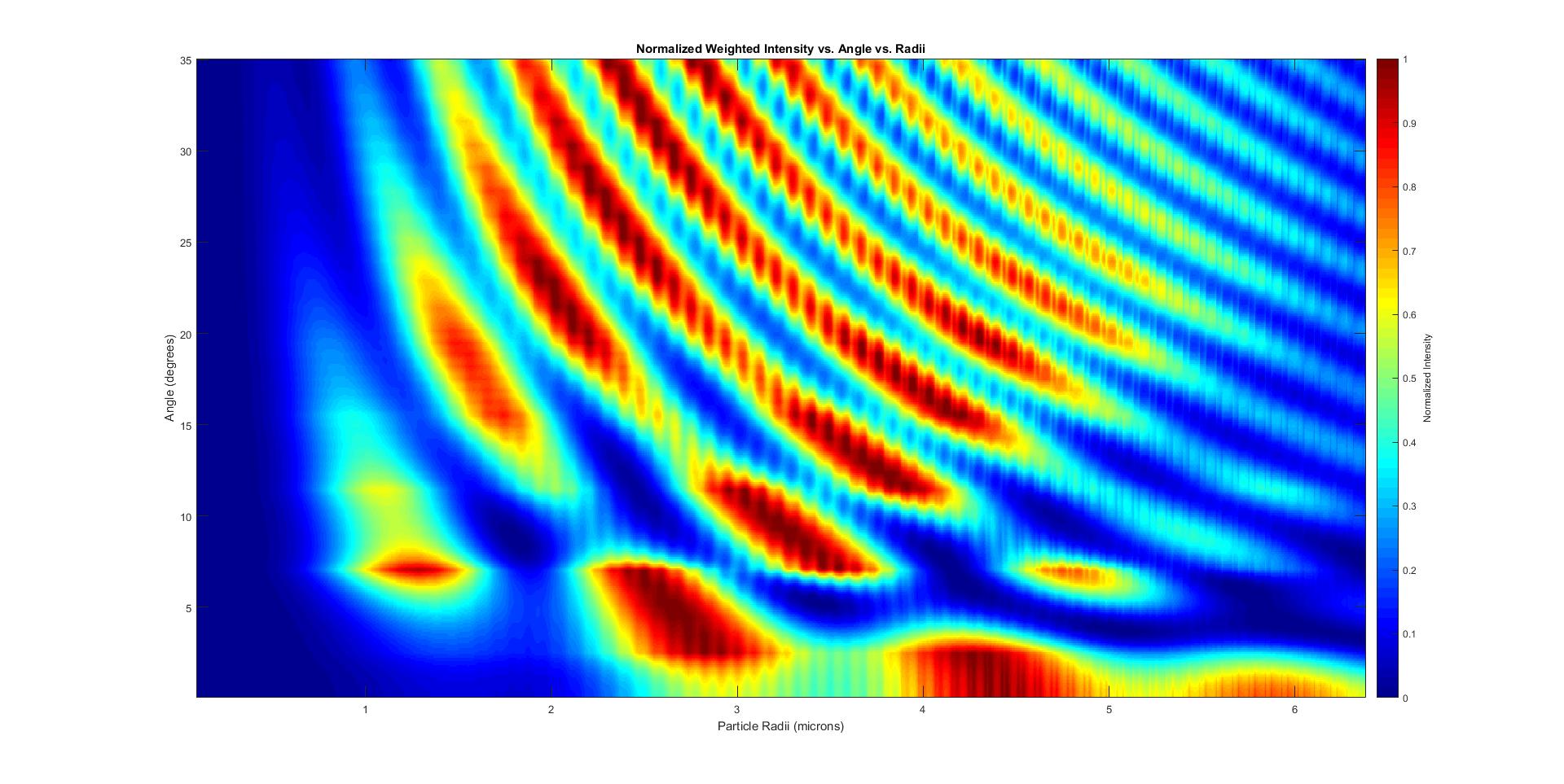
The Signal Processing and Applied Mathematics Research Group at the Nevada National Security Site teamed up with Embry-Riddle Aeronautical University (ERAU) to collaborate on a research project under the framework of PIC math program with challenge to make a recommendation about whether to use a technique, used in the air quality industry, called Mie scattering, and repurpose this method to measure particle sizes that are emitted from a metal surface when it's shocked by explosives.
Support for this project is provided by MAA PIC Math (Preparation for Industrial Careers in Mathematics) Program funded by the National Science Foundation (NSF grant DMS-1345499).
The Signal Processing and Applied Mathematics Research Group at the Nevada National Security Site (NNSS) teamed up with Embry-Riddle Aeronautical University (ERAU) to collaborate on a research project under the framework of MAA PIC math program with challenge to make a recommendation about whether to use a technique, used in the air quality industry, called Mie scattering, and repurpose this method to measure particle sizes that are emitted from a metal surface when it's shocked by explosives.
Using simulated data derived from Mie scattering theory and existing codes provided by NNSS students validated the simulated measurement system. The construction data procedure was implemented with an additional choice of discretization technique: randomly distributed particle radii and incrementally discretized particle radii. The critical regions of sensors position were determined.
Support for this project is provided by MAA PIC Math (Preparation for Industrial Careers in Mathematics) Program funded by the National Science Foundation (NSF grant DMS-1345499).
Major outcomes:
- Team presented results at 2017 MathFest as poster presentation
- Results were presented at ERAU campus show case
- Results were presented at 2018 ERAU Discovery Day
- Clayton Birchenough got internship with Nevada National Security Site for Summer 2017 and Summer 2018
Results were published in:
Kasey Bray, Clayton Birchenough, Marylesa Howard, and Aaron Luttman. (2017) Mie scattering analysis, National Security Technologies, LLC internal report. - Tilden Roberson got CO-OP with NASA's Armstrong Flight Research Center for fall 2017
- Tilden Roberson is currently pursuing his Master Degree at ERAU
- Joao Rocha Belmonte got internship in Germany with MTU Aero Engines for fall 2017
- Joao Rocha Belmonte is currently pursuing his Master Degree at ERAU
- Clayton Birchenough won 2nd place for poster presentation at 2018 ERAU Discovery Day
Categories: Undergraduate
-
ERAU Industrial Math Project: Quantifying Uncertainties in Image Segmentation
PI Mihhail Berezovski
CO-I Jean-Lucien Gionet
CO-I Tori Hoff
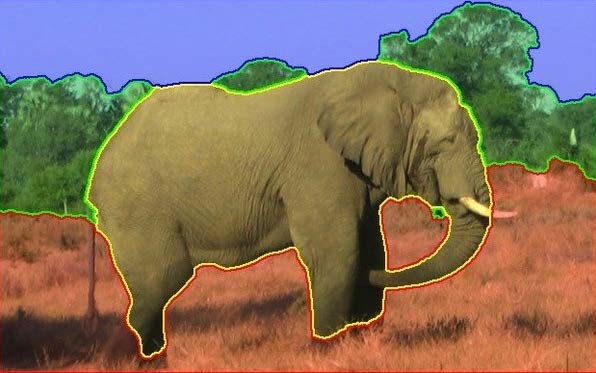
The Signal Processing and Applied Mathematics research group at the Nevada National Security Site (NNSS) is excited to partner with students at Embry-Riddle Aeronautical University to develop a rigorous statistical method for characterizing the effects of user interaction on supervised image segmentation.
One of the most important methods for understanding dynamic material experiments, like high-explosives driven implosion studies or laser driven shock studies, is to take pictures of some type and perform quantitative analyses of the images. In many cases, what we are most interested in are regions of different materials in an image or regions of the same material in different states. The concept of image segmentation is the process of separating different parts of an image into different categories.
Google Scholar returns about 2.3M results for image segmentation, so there are a lot of ways to do it. Most such ways, however, fall into the category of qualitative image analysis, which means one just wants to recognize whether an object exists in an image or make qualitative statements about the different regions of an image. Scientific analysis of experiments requires quantitative imaging, and it is important to accurately find the boundaries between the different regions, as well as assess the uncertainties associated with the boundaries. In some sense, we would like to draw error bars around the boundary curves. In order to accomplish this, our team at the NNSS has developed a new statistical method for image segmentation, called Locally Adaptive Discriminant Analysis (LADA).
Because this algorithm provides quantitative analysis of material boundary locations based on local information, enough local information must first be provided to be of practical use. Here, the user must select a large portion of the image as training data to aid in the identification of the boundaries. The purpose of informing the algorithm through local information is due to the fact that our images often change in intensity depending on where the material is located in the image,
for example, due to lighting heterogeneity. The issue is that there are different portions of that image with different intensities that correspond to the same material. By selecting training data only locally, the algorithm doesn't get confused by training data of the same material in different regions of the image.The primary questions that we would like the ERAU team to address are
1. How do the boundaries that are computed by LADA vary, as the user-selected training data are varied? (If two people select different training data, how different are the resulting boundaries?)2. How does one even quantify the differences between two sets of boundaries computed for the same region?
3. How do the confidence bands that are computed by LADA vary, as the user-selected training data are varied?
4. How does one quantify the differences between two sets of confidence bands for a region's boundary?
5. Can we quantify how boundaries and uncertainties are affected by the sheer amount of training data provided? (Does doubling the amount of training data cut the uncertainties in half?)Categories: Undergraduate
-
ERAU Industrial Math Project: Predictive Analytics in Child Welfare
PI Mihhail Berezovski
CO-I Maegan Revak
CO-I Daniel Oldham
CO-I Betiay Babacan
CO-I Nathan Foster
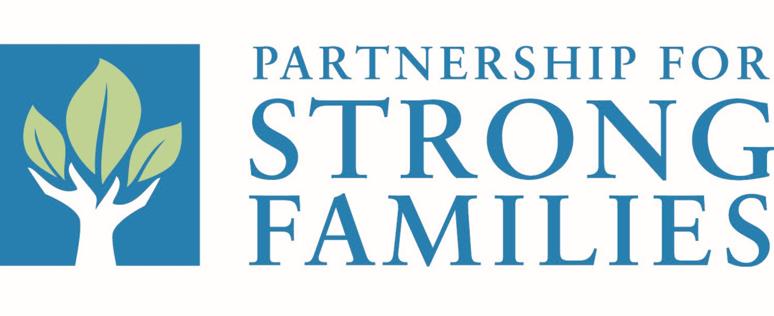
The purpose of this project is to study the data provided by Partnership for Strong Families (PSF) and identify any factors that could lead to a child being removed from his/her home multiple times.
The Partnership for Strong Families (PSF) is a child welfare organization headquartered in Gainesville, Florida helping to serve 13 counties in northern Florida. PSF is a service provider for The Florida Department of Children and Families (DCF). DCF estimates that, within PSF’s area, approximately 45 children are removed every month from their parents’ (or guardians’) care. This is equivalent to approximately 5-6 children per 100 alleged victims of child abuse.
There is a clear need to identify, as early as possible, children who are at risk. As more data is collected, tracking methodologies need to be developed to predict the likelihood of a child entering (or reentering) the state system. The purpose of this project is to examine removals within PSF’s area over the last 7 years and to potentially identify factors that lead to a child’s re-entry into the state shelter system.Children are removed from their parents’/guardians’ care due to verified findings of allegations called into the Hotline. Parents are given a Case Plan to complete to provide them with the tools for the children to return safely to their family home. Reunification occurs once PSF, DCF and the Court agree that the children should be safe in the home when returned.
In generic terms, we will attempt to look at children who were separated from their parents then reunified at some later point. The question is whether there are any quantifiable indicators within the case that, when assigned an unknown weight, will determine whether we can predict a child will be removed again. If there’s a relatively high likelihood of removal, then perhaps services can be provided to the family to ensure the child will be safe and not need to be removed.
This project is sponsored by ERAU Office of Undergraduate Research through IGNITE grant.
Categories: Undergraduate
-
ERAU Industrial Math Project: OneSky Optimization
PI Mihhail Berezovski
CO-I Jose Gachancipa Parga
CO-I Timothy Mitchell
CO-I Ian Young
CO-I Ian Mungovan
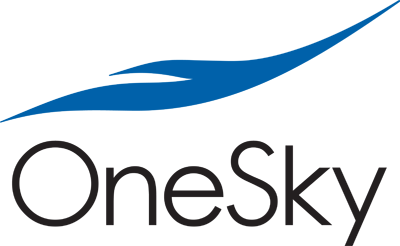
OneSky Flight supports the technology needs of five established private jet brands: Flexjet, Sentient Jet, SkyJet, PrivateFly, and Sirio. One key function required by these businesses is fleet optimization. The ultimate goal for the OneSky Optimization project is to create a new optimizer that works across all of the OneSky brands.
This is the exercise of matching available aircraft with trips that need to be flown for customers. There are many possible conditions, stipulations, and goals in fleet optimization depending on the business. For instance, Flexjet is a fractional ownership brand that has its own fleet of aircraft that is used to meet owner needs. However, Sentient is a charter broker brand that does not own any aircraft, and instead, works with various operators’ aircraft to meet customer needs. In working with Embry-Riddle Aeronautical University, we hope to develop our own optimization algorithms and solvers to eliminate the need for the mathematical engine, CPLEX, which is currently being used.
One strategy that has been used for this type of problem is to create a set of ten to twenty optimization algorithms, develop heuristics that take care of constraints, utilize machine learning to train the algorithms based on historical data, and create criteria for identifying the best solution from the set of results.Categories: Undergraduate
-
ERAU Industrial Math Project: Characterizing Seismic Events through Advanced Data Analytics
PI Mihhail Berezovski
CO-I Lawrence Acchione
CO-I Nathaniel Arzola Lilly
CO-I Dhairya Chokshi
CO-I Jessica Haselwood
CO-I Paige Rasmussen
CO-I Nikolaus Rentzke
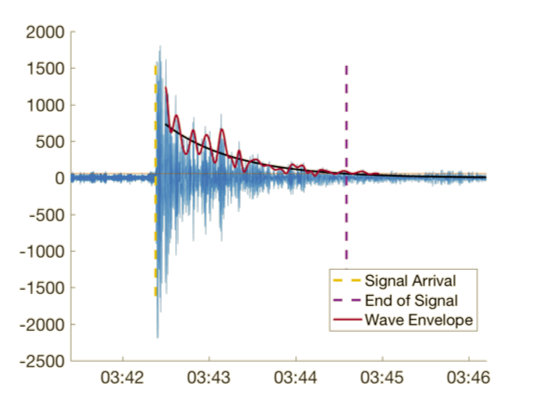
The Signal Processing and Applied Mathematics research group at the Nevada National Security Site, is seeking to collaborate with students at Embry-Riddle Aeronautical University to develop advanced data analytics methods for characterizing seismic events in the southwest United States as near-field earthquakes, far-field earthquakes, or non-natural seismic events, using publicly available seismic data.
One way of monitoring whether other countries are engaging in explosives-driven testing of weapons is to measure seismicity from the events, but this is only interesting if we can correctly characterize a seismic event as an:
- earthquake,
- industrial explosives event (mining, construction, etc.),
- or an explosives test.
The first step is to simply be able to distinguish between natural and non-natural seismic events. Since the Nevada National Security Site engages in explosives-driven tests - and is in an area of active earthquake activity - it is a natural test bed for developing data analytics approaches to classifying signals as natural or non-natural. Being a "test bed" means that, in addition to the measured signals, we have some ground truth information, meaning we know when earthquakes and explosives tests actually happen.
Larger-scale experiments, like the North Korean nuclear tests, can be seen at much larger distances, so even in Nevada we can measure seismic signals from nuclear tests. Figure shows a seismic measurement in Nevada from North Korea's September 2017 nuclear test.
Primary Goal: Develop analytics methods for differentiating near- field, small earthquakes in Nevada and southern California, from far- field, large earthquakes around the world, from non-natural seismic events.
One of the primary challenges in analyzing seismic data is that the data is collected 24 hours per day, 7 days a week, but actual seismic anomalies - either natural or not - occur relatively rarely.
Thus a first step in the analytics is to develop a technique for combing through the data to find anything that looks like an anomaly. The second task will be to classify the anomalies.Categories: Undergraduate
-
NREUP: Predictive Analytics for Dynamic Pricing in Private Aviation
PI Mihhail Berezovski
CO-I Mariah Marin
CO-I Camryn Wills
CO-I Mafalda Soares

OneSky Flight supports the technology needs of four established private jet brands; Flexjet, Sentient Jet, PrivateFly, and Sirio. One key function required by these businesses is trip pricing. This is the exercise of determining the appropriate price for a trip, considering many factors. Today, this process is manual. The ultimate goal of this project is to create a dynamic pricing tool that generates an appropriate price for trips in the US and EU. There is a large part of this project that needs to be addressed: Event Calendar. The Event Calendar includes a factor for each day of the year. These factors are based on the events/holidays that happen throughout the year and their impact on the demand for days on and surrounding the events/holidays. Support for this project is provided by the National Research Experience for Undergraduates Program (NREUP) of the Mathematical Association of America funded by the NSF Grant #1950644.
OneSky Flight supports the technology needs of four established private jet brands; Flexjet, Sentient Jet, PrivateFly, and Sirio. One key function required by these businesses is trip pricing. This is the exercise of determining the appropriate price for a trip, considering many factors. Today, this process is manual. The ultimate goal of this project is to create a dynamic pricing tool that generates an appropriate price for trips in the US and EU. There is a large part of this project that needs to be addressed: Event Calendar. The Event Calendar includes a factor for each day of the year. These factors are based on the events/holidays that happen throughout the year and their impact on the demand for days on and surrounding the events/holidays.
In order to build the list of possible events that affect the intensity of flights extended data analysis was performed. Along with processing 3 years of raw flight data (~8,000,000 single flights), students did independent research on theory behind dynamic pricing. Team determined the patterns in raw data and identify anomalies as possible event, mapping them and sorting them in holidays, sport events, extreme weather events, etc. based on open sources, also recognized the local and global patterns before identification. The corresponding quantitatively model for model of dynamic pricing algorithm was developed. It is the hierarchical model with primary and secondary factors: considering normal weekly traffic, seasonal increments, and day of the week of a selected event. With given three years of flight history, model was build using any two years and validated using third on: the prediction of demand for third year was modeled and compared with third year actual data.
Support for this project is provided by the National Research Experience for Undergraduates Program (NREUP) of the Mathematical Association of America funded by the NSF Grant #1950644.
Categories: Undergraduate
-
Novel Space Science Test via Adaptive Control and Integral Concurrent Learning Leveraging On-Orbit CubeSat Structural Identification
PI Riccardo Bevilacqua
The objective of this work is to create the basic science underpinning the structural testing and evaluation framework and control for deployable large spacecraft.
The objective of this work is to create the basic science underpinning the structural testing and evaluation framework and control for deployable large spacecraft. Large space structures and those with high dimensional ratio between deployed and stowed configurations are extremely difficult to test on the ground. The AFRL’s Space Vehicle Directorate recently opened the new Deployable Structures Laboratory, or DeSeL, as evidence of a renewed interest towards these systems. DeSeL represents the state-of-the-art technology for on-the-ground experimentation of deployable systems. In particular, an active Gravity Off-Load Follower (GOLF) cart system is being currently developed, intended to have three degrees of freedom (attitude motion) which could foreseeably provide the capability for large low-frequency motions. The real capabilities of the GOLF system are yet to be determined, and this research effort will develop in parallel, assist, support and inform the development of this new facility at AFRL.
New testing and evaluation science to identify these systems’ behavior and control them, that are robust to large uncertainties in the structural dynamics are then needed, and the first time they deploy on orbit is the ultimate test.
We propose to obtain the objective by combining novel control and learning theory with ad-hoc experimental activities. The culmination of this effort will be a flight demonstration, where a CubeSat previously designed by the Advanced Autonomous Multiple Spacecraft (ADAMUS) laboratory will be modified in its design and perform autonomous on-orbit structural identification, control, and testing.
The flight demonstration will be based on measuring the natural frequencies, damping ratios and vibration mode shapes via excitation of the spacecraft, using reaction wheels on the main hub and potentially distributed small thrusters on the flexible bodies, emulating the configuration of the AFRL’s Space Solar Power Incremental Demonstrations and Research Project (SSPIDR).
Categories: Faculty-Staff
-
GNC Efforts in Support of the University of Floridas Research for the NASA Instrument Incubator
PI Riccardo Bevilacqua
The following tasks will be performed by one Ph.D. student and Dr. Bevilacqua (PI at ERAU), in support of the University of Florida’s proposal for the NASA’s Instrument Incubator Program (IIP):
Year 1:
- Drag-compensation and test mass control design. Adaptive control combined with integral concurrent learning will be investigated to estimate, in real-time, the effects of drag on the spacecraft, to enable precise control of the test mass inside it. The PI has successfully used this technique for drag-based spacecraft formation flight, where online estimation of the ballistic coefficient of an unknown vehicle is critical.
- Support for drag-compensation thruster mapping. Lyapunov-based thruster selection principles, previously developed by the PI, will be used to simplify the thruster mapping problem, and prevent the use of any numerical iterations, to ease online implementation. An additional step will involve exploring the possibility to use adaptive + ICL control to also estimate the thrust errors and their misalignment.
Year 2:
- Spacecraft acceleration estimation based on S-GRS outputs. The test mass position and orientation are measured inside the sensor and the applied forces and torques on the test mass are known. How to use this information to optimally estimate the spacecraft acceleration and angular acceleration due to atmospheric drag remains a challenge. An approach based on a bank of Kalman (or Extended Kalman) Filters will be explored, possibly in iterative form, as previously done for spacecraft relative motion estimation by Dr. Gurfil at Technion and by the PI and one of his former students.
Year 3:
- Support for hardware-in-the-loop testing of the control system at UF. The PI and the PhD student will support experimentation at UF, to implement the above algorithms in hardware systems. The PI has over a decade of experience in on-the-ground testing of spacecraft GNC systems.
Year 1-3:
- Support for numerical simulation of the closed-loop system. High-fidelity orbital and attitude propagators will be used to test the algorithms developed. STK and NASA’s Spice will also be candidates for comparison.
Categories: Faculty-Staff
31-40 of 238 results
